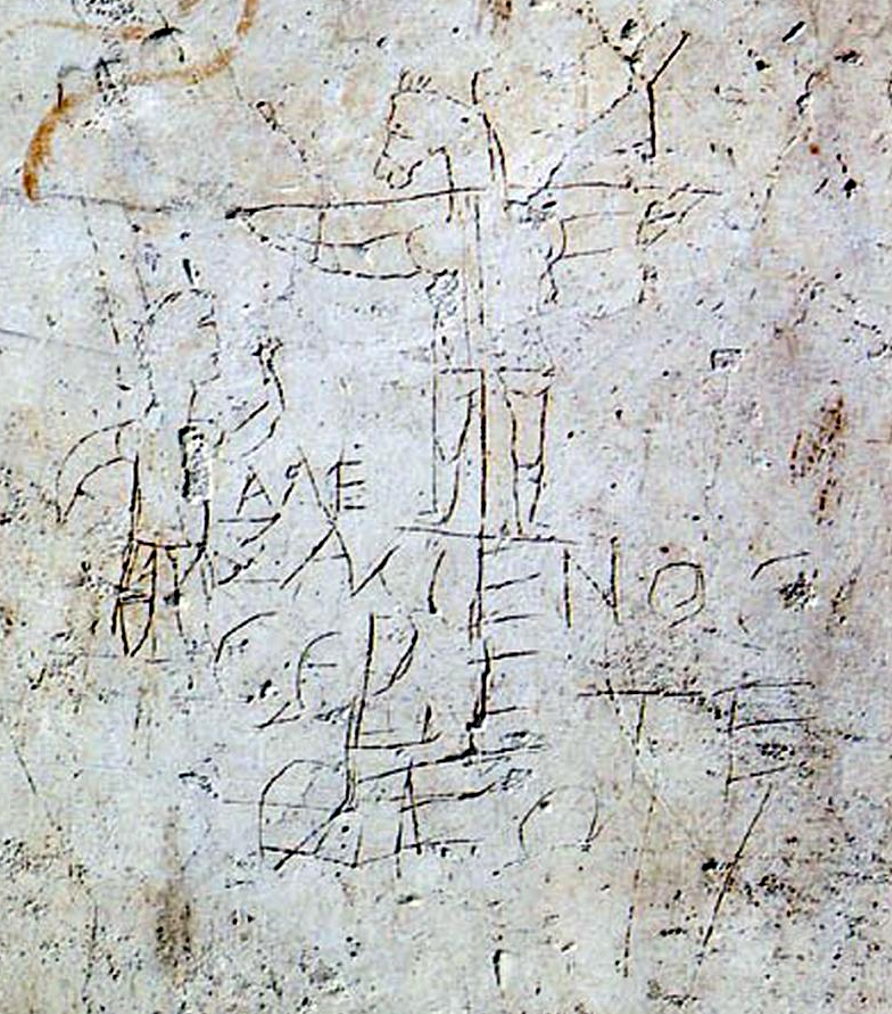Onolatry on:
[Wikipedia]
[Google]
[Amazon]
 Onolatry is the supposed worship of the
Onolatry is the supposed worship of the
''Tiberio...'', of Zvi Yavetz, on ''books.google.it''
Anti-Christian sentiment in Europe Donkeys Animal worship Set (deity)
 Onolatry is the supposed worship of the
Onolatry is the supposed worship of the donkey
The domestic donkey is a hoofed mammal in the family Equidae, the same family as the horse. It derives from the African wild ass, ''Equus africanus'', and may be classified either as a subspecies thereof, ''Equus africanus asinus'', or as a ...
. In Imperial Rome
The Roman Empire ( la, Imperium Romanum ; grc-gre, Βασιλεία τῶν Ῥωμαίων, Basileía tôn Rhōmaíōn) was the post-Roman Republic, Republican period of ancient Rome. As a polity, it included large territorial holdings aro ...
, the charge of onolatry was used to taunt the Jews and first Christians. The association of Jews with donkeys was a common feature of Hellenic as well as Latin ethnographic and historical writings, and included accusations of worshipping a golden donkey head and even sacrificing foreigners to it at intervals. A famous example of this is the Alexamenos graffito
The Alexamenos graffito (also known as the ''graffito blasfemo'', or blasphemous graffito) is a piece of Roman graffito scratched in plaster on the wall of a room near the Palatine Hill in Rome, Italy, which has now been removed and is in the Pa ...
.
The charge was likely first used against Jews in Egypt
Egyptian Jews constitute both one of the oldest and youngest Jewish communities in the world. The historic core of the Jewish community in Egypt consisted mainly of Egyptian Arabic speaking Rabbanites and Karaites. Though Egypt had its own com ...
, where donkeys were at some points associated with Set
Set, The Set, SET or SETS may refer to:
Science, technology, and mathematics Mathematics
*Set (mathematics), a collection of elements
*Category of sets, the category whose objects and morphisms are sets and total functions, respectively
Electro ...
, the murderer of Osiris
Osiris (, from Egyptian ''wsjr'', cop, ⲟⲩⲥⲓⲣⲉ , ; Phoenician: 𐤀𐤎𐤓, romanized: ʾsr) is the god of fertility, agriculture, the afterlife, the dead, resurrection, life, and vegetation in ancient Egyptian religion. He was ...
who is in turn destroyed by Isis
Isis (; ''Ēse''; ; Meroitic: ''Wos'' 'a''or ''Wusa''; Phoenician: 𐤀𐤎, romanized: ʾs) was a major goddess in ancient Egyptian religion whose worship spread throughout the Greco-Roman world. Isis was first mentioned in the Old Kingd ...
. It is first attested in the late first century BCE, and was used against Christians extensively in the first and second centuries CE before disappearing almost entirely in the third. The accusation against the Christians is discussed by Tertullian
Tertullian (; la, Quintus Septimius Florens Tertullianus; 155 AD – 220 AD) was a prolific early Christian author from Carthage in the Roman province of Africa. He was the first Christian author to produce an extensive corpus of L ...
and Minucius Felix
__NOTOC__
Marcus Minucius Felix (died c. 250 AD in Rome) was one of the earliest of the Latin apologists for Christianity.
Nothing is known of his personal history, and even the date at which he wrote can be only approximately ascertained as betwe ...
, among other early Christian apologists.
Arthur Bernard Cook
Arthur Bernard Cook (22 October 1868 in Hampstead – 26 April 1952 in Cambridge) was a British archeologist and classical scholar, best known for his three-part work, ''Zeus: A Study in Ancient Religion''.
Early life and education
Arthur Bern ...
, in an 1894 article, argued that there had been an ancient Mycenaean cult practising onolatry, citing a fresco depicting donkey-headed figures found near a sacrificial pit and several carved gems apparently showing people wearing donkeys' heads and skins holding sacrificial objects, and further describing the diverse roles asses played in Ancient Greek mythology. His interpretation was challenged at the time by Andrew Lang
Andrew Lang (31 March 1844 – 20 July 1912) was a Scottish poet, novelist, literary critic, and contributor to the field of anthropology. He is best known as a collector of folk and fairy tales. The Andrew Lang lectures at the University ...
in Longman's Magazine
''Longman's Magazine'' was first published in November 1882 by C. J. Longman, publisher of Longmans, Green & Co. of London. It superseded ''Fraser's Magazine'' (published 1830 to 1882). A total of 276 monthly issues had been published when the la ...
.
See also
*Alexamenos graffito
The Alexamenos graffito (also known as the ''graffito blasfemo'', or blasphemous graffito) is a piece of Roman graffito scratched in plaster on the wall of a room near the Palatine Hill in Rome, Italy, which has now been removed and is in the Pa ...
* Cultural references to donkeys
There are many cultural references to donkeys, in myth, folklore and religion, in language and in literature.
Religion, myth and folklore
Due to its widespread domestication and use, the donkey is referred to in myth and folklore around ...
* History of early Christianity
Early Christianity (up to the First Council of Nicaea in 325) spread from the Levant, across the Roman Empire, and beyond. Originally, this progression was closely connected to already established Jewish centers in the Holy Land and the Jewish d ...
References
External links
*{{in lang, it}''Tiberio...'', of Zvi Yavetz, on ''books.google.it''
Anti-Christian sentiment in Europe Donkeys Animal worship Set (deity)